
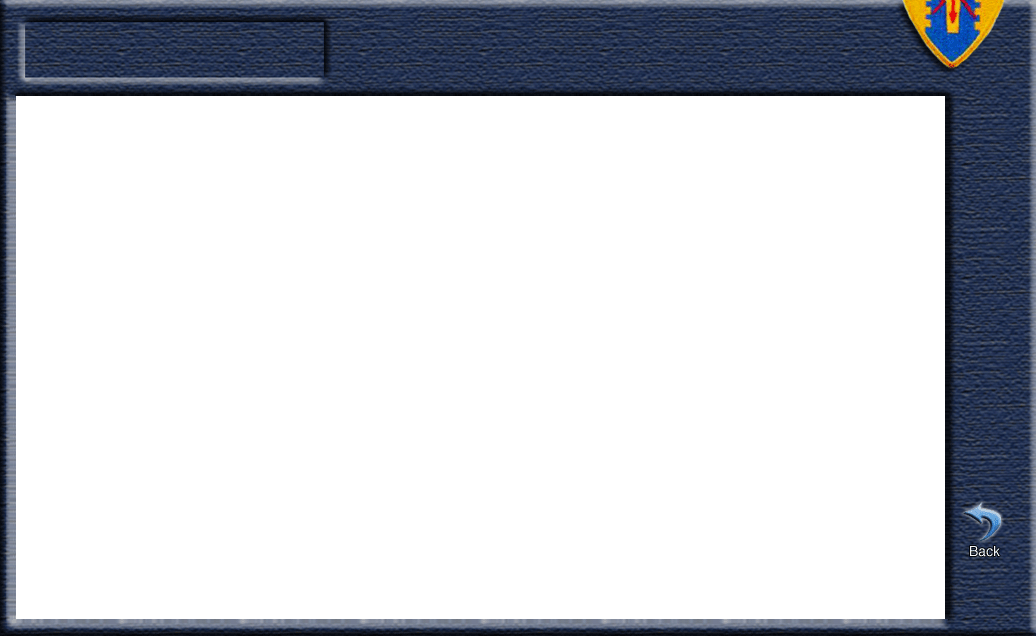
Sling Load
Ken tells how his Cobra was terribly shot up in New Car Smell. This is a follow up telling about how the Cobra was later deep sixed.
It is a fact based fictional story
.....................................................................................................................................................................................
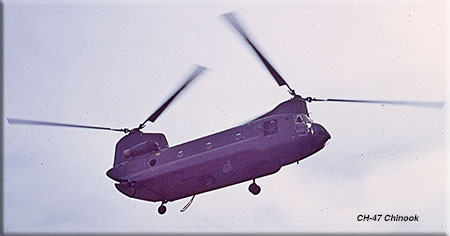 The thumps of twin rotors resonated as the huge CH-47 helicopter approached the perforated steel runway, like the warning of a rogue typhoon, buffeting the trees as it shrieked a banshee wail from its paired turbine engines. As the Chinook neared, the massive rotors whirled eddies of sand. Its roar amplified into a thunderous bellow. With a growl, the 100-foot-long helicopter shimmered into view and made a low-level pass over the runway. Nearing the end, the ship rolled into a zooming wing-over, exposing its six blades as it settled onto the downwind leg. Having completed a showy and technically expert maneuver, the Chinook
The thumps of twin rotors resonated as the huge CH-47 helicopter approached the perforated steel runway, like the warning of a rogue typhoon, buffeting the trees as it shrieked a banshee wail from its paired turbine engines. As the Chinook neared, the massive rotors whirled eddies of sand. Its roar amplified into a thunderous bellow. With a growl, the 100-foot-long helicopter shimmered into view and made a low-level pass over the runway. Nearing the end, the ship rolled into a zooming wing-over, exposing its six blades as it settled onto the downwind leg. Having completed a showy and technically expert maneuver, the Chinook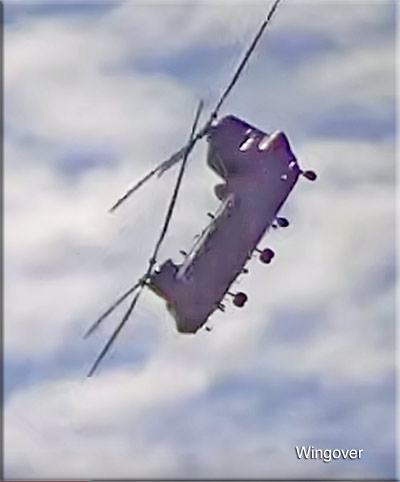 executed the final approach to Tan My, Republic of Viet Nam.
executed the final approach to Tan My, Republic of Viet Nam.
My fellow gun pilots and I waited, anticipating the Big Event: my Cobra’s recovery via sling load. While the aircraft’s battle damage wasn’t exactly my fault, I had been the unfortunate pilot when the enemy poured munitions into various exposed areas of the fuselage.
Early-rising mechanics and aviators of F Troop/4th Air Cavalry gaped in awe. Their airstrip, while home to AH-1 Cobras, OH-6 Loaches and UH-1 Hueys, was rarely visited by the giant heavy-lift helicopters. Grins seemed to be the uniform of the day.
The Chinook landed, rolled ponderously down the runway, then squatted on an unoccupied pad where it began its shutdown. The rear ramp descended onto the tarmac with a loud clang. Two crewmen quickly exited and waited, flanking the opening, audio cords attached to the ship’s intercom system. Emerging from the shadows, the pilots strode confidently toward their rapt audience. They halted, snapped to attention and in unison delivered a practiced salute. They were clearly pleased with their rock-star performance and reception.
As the blades coasted to a halt, the F Troop Commander and Maintenance Officer approached the CH-47 crew and invited them to the mess hall for a quick briefing and refreshments. A loadmaster and his rigging crew exited the ramp towing a cart piled high with ropes, straps and cables. They joined the Cobra crew chiefs (CEs) and other local maintenance personnel gathered around the disabled gunship, which looked forlorn without either rocket pods or turret armament as it waited for attention. A fuel tanker pulled away from the Cobra, having completed defueling the wounded aircraft.
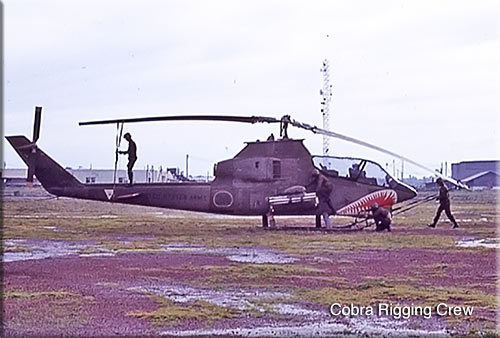 Both Cobra main rotor blades had been secured. The aft blade tethered around the tail boom and the forward blade secured by two ropes to the front toes of the skids. To maintain in-flight stability, the CEs tossed a rope over the tail boom and tied it to the Cobra’s stinger and attached a small drag chute.
Both Cobra main rotor blades had been secured. The aft blade tethered around the tail boom and the forward blade secured by two ropes to the front toes of the skids. To maintain in-flight stability, the CEs tossed a rope over the tail boom and tied it to the Cobra’s stinger and attached a small drag chute.
The riggers climbed onto the aircraft and constructed a tent-like framework, running ropes from each wing stub to the central mast, completing the web with fore and aft lines.
The finished product became the outline of a four-sided pyramid, its apex atop the main mast.
Riggers and maintenance crew gathered in the shade of a nearby hanger, smoking and awaiting events.
The mess sergeant and several KPs delivered an array of cold cuts to a picnic table and laid out a buffet for the crews. Like hungry ants, the airmen swarmed to the hot chow.
By now, a sizable group of onlookers carrying cameras had assembled near the runway. Like me, most had never seen a Cobra airlifted by a Chinook. Photographing non-threatening entertainment provided a pleasant break from the daily routine of flight operations. It was as though the circus had come to town with Dumbo as its main attraction.
In lieu of a barker, the Major and his entourage emerged from the mess hall with the CH-47 aircrew. After shaking hands all round, he sauntered over to join us at our viewing site.
Action resumed as two Cobra CEs climbed back onto the secured gunship. One carried a long wooden tent pole with a metal rod imbedded in its tip. The Chinook pilots and loadmaster did a quick walk-around inspection of the Cobra, followed by their flight engineer and crew chief. Satisfied, they climbed into the lift ship, rejoining their rigging crew.
I stood with my friends watching my broken aircraft transition from wicked gunship to denuded hulk. I waited expectantly for the next act to commence.
From the cockpit, a pilot waved his arm, beckoning me. I hurried toward the open ramp with my flight gear and boarded the Chinook to join my Cobra on it’s flight to Danang and waiting dismantling. A CE showed me how to hook up so I could monitor the action and avoid interference with the crew.
The Chinook coughed as it’s turbines and igniters began to whine and spark with crisp snapping sounds. Both rotors spun, accelerating to a shrieking wail as more collective pitch altered the blades’ angle of attack. The front wheels slowly lifted as though the helicopter had become an eager stallion pawing the air.
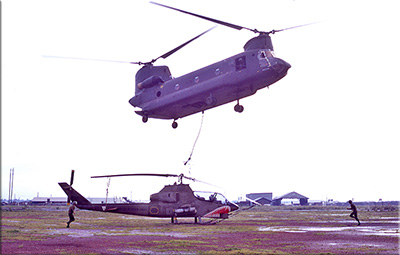 A ground guide waited until everyone was ready, then gave the signal, raising both arms like signaling a touchdown, then lowering them to shoulder level as the audience reveled in the noise and display of power. The CH-47 smoothly rose, then climbed to a high hover, to allow the loop atop the rotor mast to be suspended from the center of the lift ship.
A ground guide waited until everyone was ready, then gave the signal, raising both arms like signaling a touchdown, then lowering them to shoulder level as the audience reveled in the noise and display of power. The CH-47 smoothly rose, then climbed to a high hover, to allow the loop atop the rotor mast to be suspended from the center of the lift ship.
Maneuvering the Chinook above the Cobra, the pilot slowly descended until the CE touched the lift hook with his metal rod, releasing the static charge before placing the loop firmly into the hook mechanism. Another hand signal initiated a slight lift, removing slack from the lines mating the aircraft. Both airmen climbed down and moved away from the readied Cobra.
The Chinook began to rise, its whining blades clawing the air as the Cobra’s skids tipped forward, releasing them from the pad to dangle below the lifting ship. As I watched the exercise, I felt like a passenger on a city bus instead of a dangerous gunship commander.
“Tan My tower, Lift 62. Request departure, beach-route south.”
“Lift 62, cleared for departure as requested. Report clear of Phu Bai.”
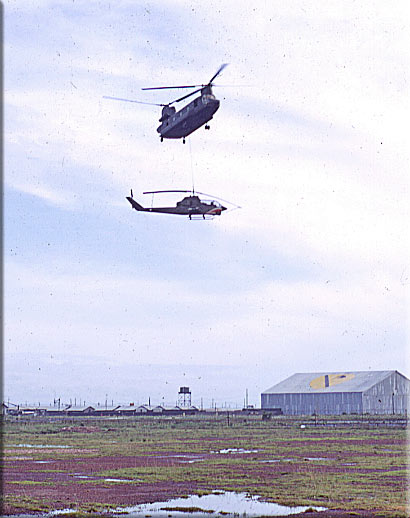 The big ship ascended until both aircraft were well clear of ground clutter, then began moving south, with the South China Sea out its left windows and the Vietnamese mainland to the right.
The big ship ascended until both aircraft were well clear of ground clutter, then began moving south, with the South China Sea out its left windows and the Vietnamese mainland to the right.
I waved to the audience on the ground ruefully watching my former aircraft swing away on its leash. Several of my fellow Cobra pilots stood, shaking their heads, mourning the loss of a once-beautiful new machine, now shot up on its maiden combat mission and looking like a bullet-pocked West Texas highway sign.
The Tan My airstrip faded away. The Chinook flew over the encroaching surf, passing above a circling shiver of hungry sharks waiting for bait fish at the end of runway 09. The aircraft continued its climb to 1000 feet above sea level and turned south two-hundred-feet east of the beach. The dangling Cobra glided below the larger aircraft as the CH-47 CE eyed the attached ship through the center well.
“You’ve got the controls. Take us home.”
“I’ve got it,” the copilot said as he assumed control of the big ship. He reveled in his opportunity to perform a new maneuver. He carefully increased speed and continued south toward Danang and Marble Mountain.
“Tan My, Lift 62 is abeam Phu Bai.”
“Roger, 62. Call the Hai Van Pass. Transition to Danang Approach at your discretion.”
Fighting after-lunch lethargy, the CE blinked while concentrating on his observation duties. A flicker from the Cobra’s tail stinger snapped him to full awareness as the load began to sway slightly. He stared intently, but nothing appeared wrong. Months of repetition ached to be recognized.
“FE, this is Al,” I heard on intercom. “Come look at this.”
“Yeah, Al. What you got?”
“Just a feeling, but something’s not right with the load.”
The flight engineer and I joined the CE who was carefully examining the hanging gunship. “Nothing there to see, Al.”
The CE looked again. No drag chute! The stabilizing chute formerly attached to the tail stinger had disappeared.
“Shit, better warn the pilots.”
The dozy pilots were enjoying the flight, taking in the spectacular views of ocean and mountains, swaying to the rock sounds of AFVN Radio.
“L.T., this is Al,” he called on intercom. “We got a problem. The drag chute is gone and the load is oscillating.”
“Roger, Al,” the copilot replied.
The AC jerked fully alert and grabbed the controls. The copilot surrendered control, but the abrupt transfer and rapid deceleration increased the load’s swaying.
“I have the controls,” yelled the AC as he fought to slow the erratically swinging Cobra.
I sweated helplessly in standby mode as the load began a dangerous see-saw motion forward and back beneath the Chinook. A slow rotation started, further disrupting the flight path.
The AC turned the ship toward the beach and initiated a slow descending approach. The oscillation abated as the forward motion lagged.
The altimeter needle unwound as the ship passed 800 feet with both aircraft still under control.
Slowly, slowly, slowly the aircraft descended. The glistening beach drew closer. With the crisis averted, the AC brought the Chinook to a high hover.
A grayish flash filled the windscreen. Thumping and pounding, hundreds of disturbed nesting gulls flew upward toward the huge helicopter.
The AC abruptly increased the collective and the lift ship rose. The dangling Cobra jerked wildly on its tether as more frenzied shorebirds fluttered and screamed.
A maddened gull flew into the cockpit, batted its wings against the front windscreen and explosively expelled avian excrement. Visibility went to shit.
“Punch it, Al,” shouted the blinded AC as he fought the controls. My adrenaline surged as the bad situation slid into disaster.
The CE pulled the emergency release lever and the Cobra plunged, with a tremendous splash, into the South China Sea. The sudden loss of 5800 pounds of sling load made the Chinook soar, leaving the swarm of angry gulls far below.
“Danang tower, Lift 62. Sling load lost abeam Hai Van Pass. Please relay to Lift ops.”
“Lift 62, roger. Report load location after arrival.
”Now the AC called Lift Ops to face the music. “Lift Ops, Lift 62. We have a problem. Cobra sling load from 4th Cav, Tan My jettisoned.”
“Lift 62, Lift 3, say again,” the unit Operations Officer called.
“Lift 3, Lift 62. I say again, sling load lost.” the contrite AC responded.
“Lift 62, report to Lift 6 immediately upon arrival home base. Acknowledge!”
Finally under control, the chastened CH-47 AC circled his aircraft over the water, watching the vortex spread outward in widening ripples, exposing the accusatory jutting tail boom of the lost aircraft.
I sat slumped in my canvas jump seat as we continued to the Danang base. Hopefully the replacement Cobra I picked up at Marble Mountain would enjoy a more successful life with it’s new unit. My old ship, buried in the sea floor now has a new mission: providing shelter and habitat to the rich diversity of marine life in the South China Sea.
Pictures by Bob Jones, Centaur 54, F Troop 4th Cav, RVN 1971-72